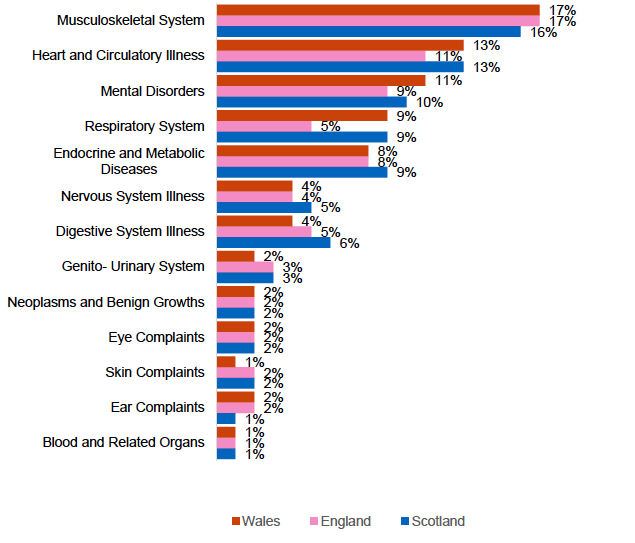Coronavirus (COVID-19) - disabled people: health, social and economic harms - research report
Looks at how the COVID-19 pandemic has impacted disabled people in Scotland by considering health, social and economic harms.
1. Demographics of the disabled populations
The proportion of the populations in England, Wales and Scotland with a disability were broadly similar, as at the 2011 Census. In England and Wales, nearly 1 in 5 (19% of the population) had a disability – 20% of women and 19% of men.[15],[16] Similarly, 1 in 5 (20%) people living in Scotland had a disability – 21% of women and 18% of men.[17]
In addition, disabled people in all three countries are more likely to experience multiple deprivation. This is important to note because experiencing multiple deprivation increases the risks associated with COVID-19.[18]
The 2019 Scottish Health Survey showed that adults (aged 16+) with a limiting long-term condition[19] were more likely to live in the most deprived 20% of areas in Scotland than those with non-limiting long-term conditions and those with no long-term conditions. Almost half (46%) of adults in the most deprived 20% reported limiting longstanding conditions compared with only a quarter (25%) of adults in the least deprived.[20]
In 2019-20, 45% of the population living in the 20% most deprived areas in Wales had a limiting longstanding illness, while only 27% living in the 20% least deprived area in Wales had a limiting longstanding illness.[21][22]
In 2011, of the 10 local authorities in England with the highest percentage of residents experiencing limiting longstanding condition(s), nine were placed among the top third most deprived authorities in England, indicating the links between the relative deprivation of an area and the disabled status of its population.[23],[24]
1.1 Prevalence of long- term health conditions

Sources: Scottish Health Survey 2019; National Survey for Wales 19-20; Health Survey for England 2017-18[27]
Figure 1, above, shows that the prevalence of long-term health conditions in Scotland, England and Wales are similar. In all three countries, the most common conditions were 'musculoskeletal system' (which includes conditions such as arthritis and back problems), followed by 'heart and circulatory illnesses', and 'mental disorders'. However, it does appear that 'heart and circulatory illnesses' and 'respiratory system conditions' were slightly more common in Scotland (and Wales) than in England. 'Ischaemic heart diseases', which are included within 'heart and circulatory illnesses', are linked to COVID-19 deaths.
Contact
There is a problem
Thanks for your feedback